
National State of Disaster
Impact on provinces
Safety tips
Government messages
Extreme weather events in the form of drought, floods and wild fires increasingly pose a risk to the health, well-being and safety of people. (- President Cyril Ramaphosa, SoNA, 9 February 2023, Cape Town City Hall.)
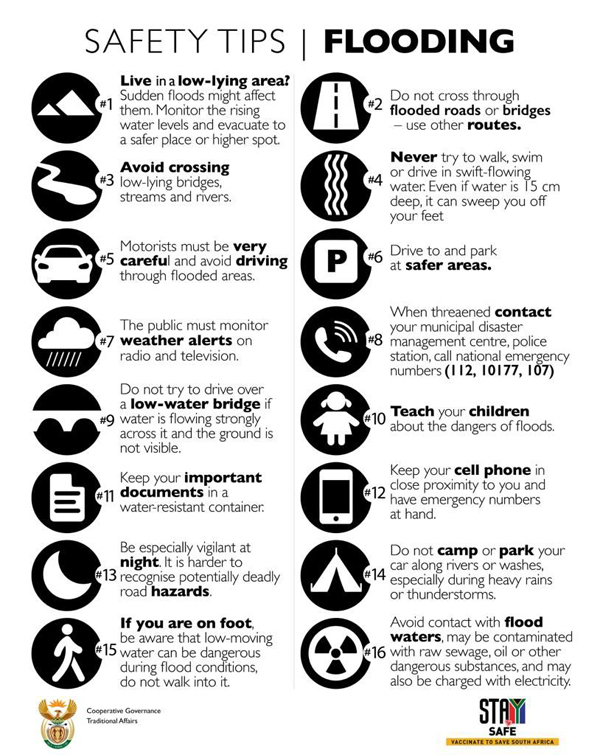
National State of Disaster
- Government has declared a National State of Disaster to enable intensive responses to widespread floods affecting parts of South Africa.
- The recent weather that the country has experienced has been brought on by the La Nina global weather phenomenon, which occurs in the Pacific Ocean.
- With the continued strengthening of the La Nina event, South Africa can expect above-normal rainfall and below-normal temperatures over the summer rainfall period.
- Forecasts indicate this weather pattern will remain in this state during the early part of 2023.
- The SA Weather Service will keep the public informed about early warnings and advisories on weather forecasts.
- The National Disaster Management Centre continues to monitor, coordinate response and recovery measures by the relevant organs of state and stakeholders.
- More information about what you can do in the event of a flood, can be found at: http://www.ndmc.gov.za/Awareness/Flyer%20(Floods).pdf
Gazetted notices on National State of Disaster
- Disaster Management Act: Classification of National Disaster: Impact of floods due to inclement weather
- Disaster Management Act: Declaration of National State of Disaster: Floods due to inclement weather
Impact on provinces
Eastern Cape
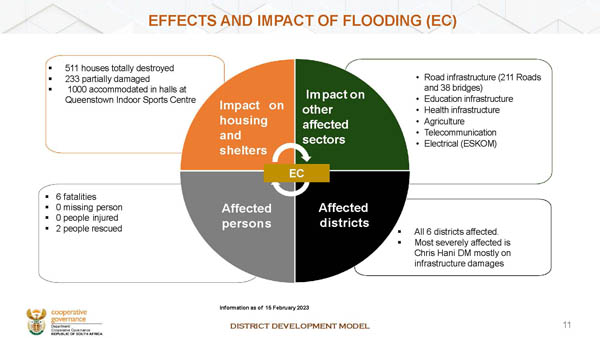
KwaZulu-Natal
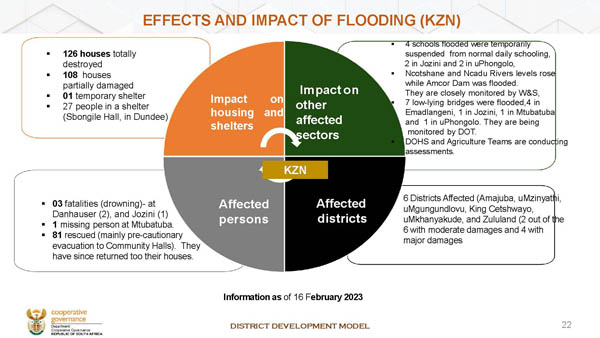
Limpopo
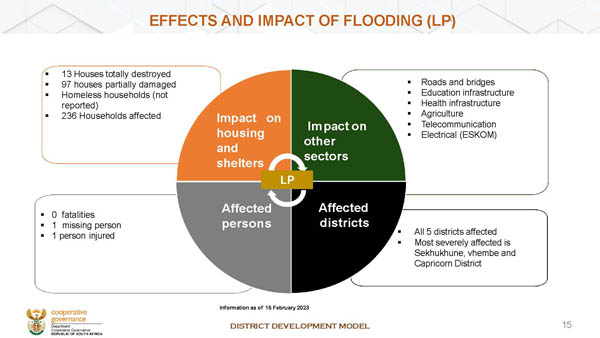
Mpumalanga
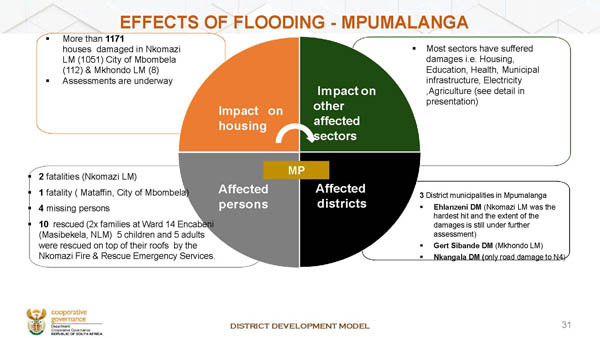
North West

Safety tips
- People living in low-lying areas must take special care during storms, as sudden floods might affect them. They should monitor the rising water levels and evacuate the areas to a safer place or higher spot when the water level rises.
- Do not cross through flooded roads or bridges – use other routes.
- Avoid crossing low-lying bridges, streams and rivers.
- Never try to walk, swim or drive in swift-flowing water. Even if the water is 15 cm deep, it can sweep you off your feet;
- Motorist must be very careful and avoid driving through flooded areas.
- Drive to and park at safer areas.
- The public must monitor weather alerts on radio and television.
- The public should contact their municipal disaster management centres or the nearest police station or call the national emergency numbers (112, 10177 or 107) when faced with threats.
- Do not try to drive over a low-water bridge if water is flowing strongly across it and the ground is not visible.
- Teach your children about the dangers of floods.
- Keep your important documents in a water-resistant container.
- Keep your cell phone in close proximity to you and have emergency numbers at hand.
- Be especially vigilant at night. It is harder to recognise potentially deadly road hazards.
- Do not camp or park your car along rivers or washes, especially during heavy rains or thunderstorms.
- If you are on foot, be aware that low moving water can also be dangerous during flood conditions. If you come upon moving water, do not walk into it.
- Where possible, communities are encouraged to try to avoid contact with any flood waters. The water may be contaminated with raw sewage, oil or other dangerous substances, and may also be charged with electricity from fallen powerlines.
Translated safety tips
Government messages
- Government urges communities in flood-affected areas to exercise caution and be extra vigilant, as more rains are predicted over the weekend.
- The South African Weather Service has issued a warning for more rains still expected in many parts of the country.
- Communities in flood-prone areas or those who are at risk of flooding are advised to move to places of higher ground.
- Provincial and Local Disaster Management teams across the country are on alert and assisting communities affected by the floods.
- The National Disaster Management Centre is in contact with provincial and local disaster management centres on the ground to monitor the situation and provide support.
- The public is encouraged to follow the regular updates and warning messages from the weather service as it monitors the weather and climate conditions.
- Where possible, communities are encouraged to try to avoid contact with any floodwaters.




